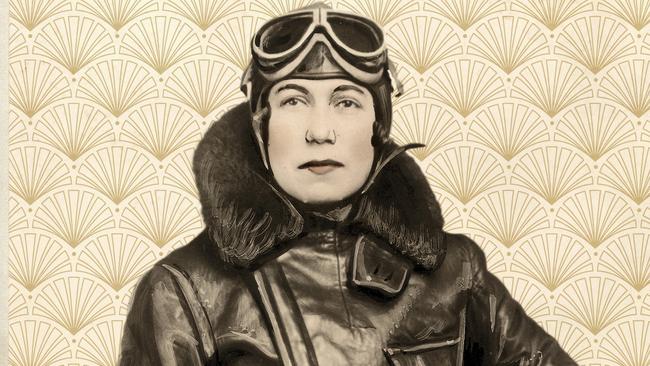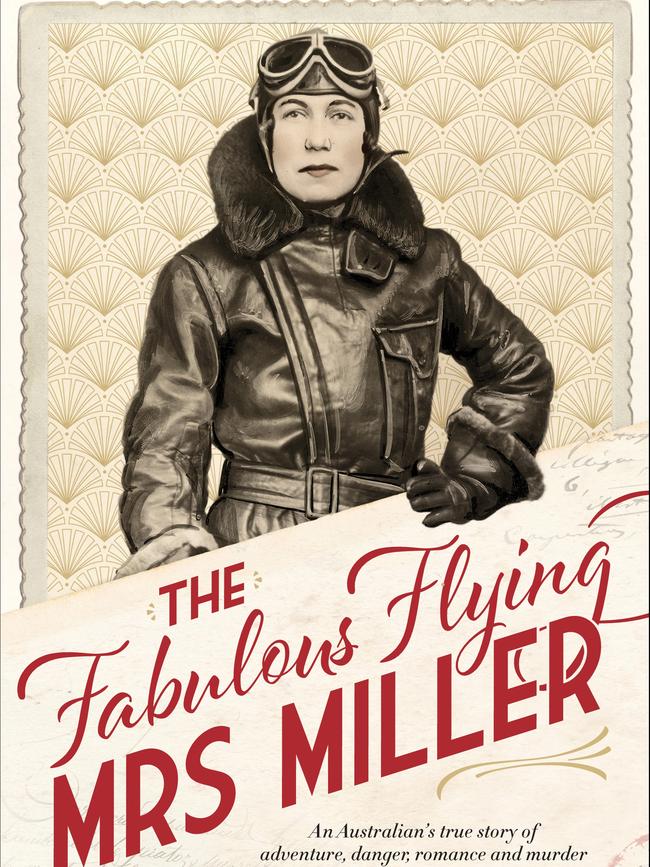Fabulous Flying Mrs Miller a soaring tale of derring-do
The Fabulous Flying Mrs Miller tells the story of a little-known and fascinating adventurer.

Jessie Miller is one of our most fascinating adventurers, even if she is little known today. In the 1920s and 30s she was world famous.
She was born in Western Australia in 1901, the year Queen Victoria died.
Four years earlier Mark Twain published Following the Equator, a nonfiction travelogue about his whistlestop tour of the British Empire. Of his time in colonial Australia Twain wrote: “It is full of surprises, and adventures, and incongruities, and contradictions, and incredibilities; but they are all true, they all happened.”
America’s most beguiling writer could well have been talking about the fascinating life and times of Miller. It’s not for nothing Carol Baxter’s book is subtitled An Australian’s true story of adventure, danger, romance and murder.

This spellbinding tale of an extraordinary woman is one of the best books I have read in years.
It is enthralling to learn what happened when, in early 1927, the petite 26-year-old Miller left suburban Melbourne and her newspaperman husband Keith Miller to travel to London by ship. She would go on to become the first woman to complete a flight from England to Australia, which, as Baxter documents, was difficult and dangerous.
Along with the great Amelia Earhart, this plucky Aussie, nicknamed “Chubbie”, flew in a celebrated air race for women known as the Powder Puff Derby. She then disappeared in a flight over the Florida Straits but, as Baxter tantalisingly puts it, “only to charm her way to a rescue”.
There are some engaging illustrations in this delightful book and two stand out. The first is a portrait photograph, taken in October 1929, of Miller landing in Cleveland, Ohio, at the finish of the Powder Puff Derby. Inserted is a snapshot of a beautifully designed winged bracelet presented to each participant in this first women-only national air race.
The second, which complements Baxter’s vibrant narrative, is a photo of Miller and Bill Lancaster — soon to be her lover — standing in front of their single-engine, open-cockpit, dual-control Avro Avian biplane, the Red Rose, on October 14, 1927. This was as they prepared for their historic 12,000-mile journey from Croydon aerodrome in London to Port Darwin on the northern Australian coast.
Baxter stresses that Miller’s remarkable story is neither historical fiction nor fictionalised history. It is narrative nonfiction; history told as a story about what actually happened. The dialogue in The Fabulous Flying Mrs Miller is taken from original records: newspaper accounts, court records and interviews with and by Miller.
Writing such a fine work of nonfiction involved huge amounts of research, including foraging for materials in libraries throughout Britain, Australia, India, Southeast Asia and the US, especially in Florida.
The book benefits enormously from first-person sources. Baxter specifically thanks her protagonist — to whom the book is dedicated — for her “consideration in leaving so many personal accounts describing your activities, thoughts, feelings and conversations”. They are, as Baxter puts, “a writer’s dream and a reader’s delight”.
Perhaps the highlight is Baxter’s detailed forensic examination of how, in the early 30s as an international celebrity, Miller found herself at the centre of one of the US’s most notorious and controversial murder trials. This concerned the shooting of an airline pilot, Charles Haden Clarke, with whom Miller had been romantically involved.
Baxter reveals the increased tensions in 1932 between Miller and Lancaster and how the latter was found not guilty of murdering Clarke by a grand jury in a celebrated trial in Miami, in which Miller was a key witness.
The full details make compelling reading. Baxter then explains and elucidates how Chubbie and Bill were reconciled after the legal ordeal was over.
The fabulous Mrs Miller died in a London hospital in 1972, 10 years after the discovery of the remains of her beloved Bill and the wreck of his biplane in the Saharan Desert. Lancaster had died there in April 1933.
As it happens, Miller’s death went entirely unremarked by the world’s press, including that of her homeland Australia.
Baxter rightly concludes that the irony is hard to miss: “Chubbie’s aviation achievements and popularity had eclipsed Bill’s in life but Bill eclipsed her in death.”
At the very least, The Fabulous Flying Mrs Miller has righted this wrong and highlights the hitherto little-known exploits of a great Australian adventurer and a pioneering aviatrix.
The Fabulous Flying Mrs Miller
By Carol Baxter
Allen & Unwin, 410pp, $32.99
Ross Fitzgerald is emeritus professor of history and politics at Griffith University.


